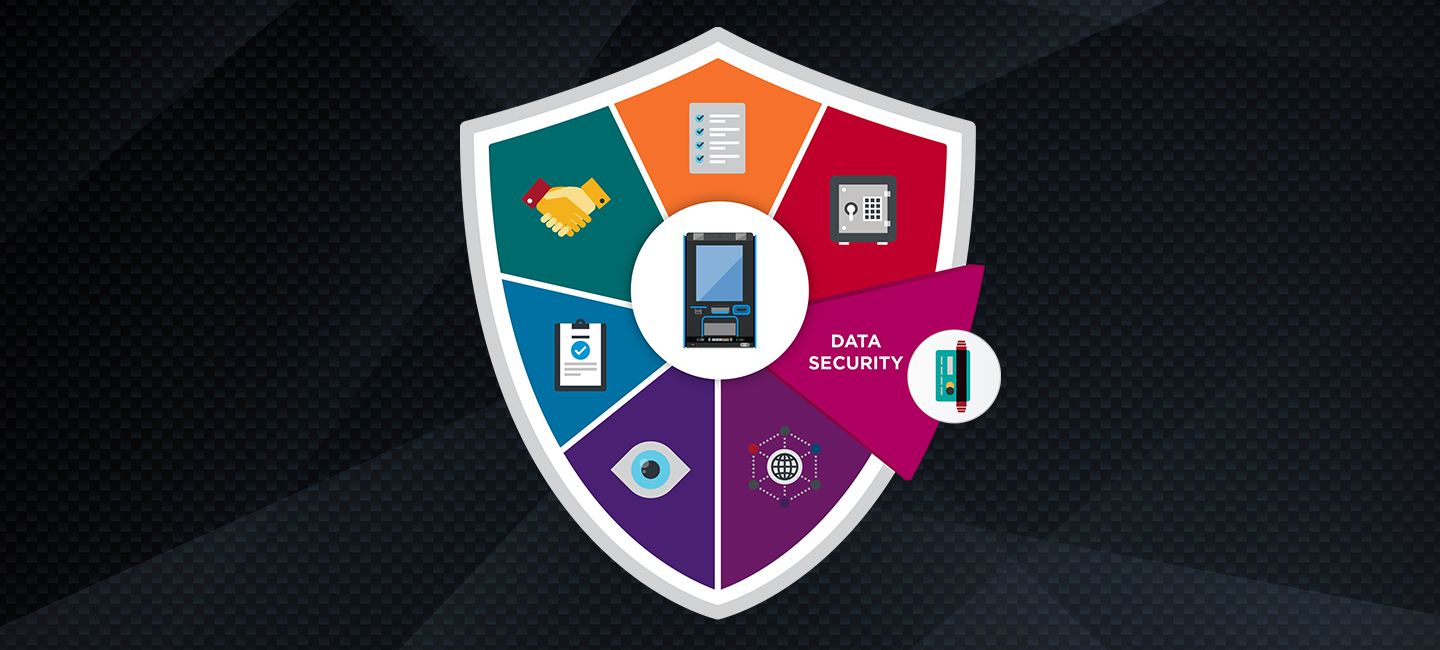You’re on the run and grab your smartphone to check a message. You place your thumb on the home button or look at the camera and the screen unlocks. You quickly access the information you were looking for. You didn’t stop a second to type in a password. And no one else can get into your phone with a simple touch—your biometric is unique.
Why can’t you use an ATM in the same way?
We know that fraud at the ATM is a real concern for customers. It exposes vulnerable financial and personal information. Using a fingerprint to touch and transact at the ATM or inside a bank is a highly secure way to authenticate a person’s identity to help secure transactions and prevent fraud. After all, no two people have the exact same print. Biometric technology is an alternative authentication method that financial institutions can adopt for higher security standards and more convenient banking. However, security, accuracy, ease of use and scalability are critical features a biometric system must provide to make this technology a trusted solution.
Hands-On Safety and Convenience
The banking and retail industries are moving toward biometrics—touch and transact—because this technology addresses head-on today’s main identity theft and fraud concerns. Why? Biometrics authenticate the identity of an individual. Breaking down what this means, identification is when you claim your identity by using a bankcard. And authentication is the act of verifying, or proving, who you are.
The problem is, cards can be lost, stolen, or forgotten. (Ever roll up to the ATM only to realize your card is at home?) And, when authentication requires providing information you know (a password), that’s also information that can be forgotten, transferred, uncovered, or guessed.
But, when you must prove who you are using biometrics, the information is always with you. When advanced sensor technology is used, biological characteristics cannot be stolen or replicated. And, biometrics are convenient, so they can be used as a secure alternative for passwords or a PIN code.
Ultimately, consumers want to know their money is safe. They want to access funds easily so transactions can be simple. And they want to know their banks are keeping up with the technology they’re already beginning to use in everyday life. (If my iPhone lets me into my personal information with a thumbprint, why can’t I take money out of my bank account the same way?)
For financial institutions, biometric technology can reduce fraud and ensure that customers are properly identified. Biometrics improve customer experience and loyalty and can allow financial institutions to deliver new features and tailored services.
Advancing Biometric Technology
How can you securely authenticate a fingerprint no matter the weather, lighting, or simple human variables (dry or wet skin, soft fingerprints)? The fact is, not all biometrics are created equal. Not all biometric systems use anti-tamper sensors or take multiple images of the fingerprint’s surface and subsurface.
There could be an opportunity for fraud if certain key characteristics are not in place. Recognizing this, our fingerprint reader was designed with safeguards that make the system convenient, scalable and completely secure:
Adaptive to wet and dry: What happens when your hands are wet, or if you have overly dry, rough skin? A biometric reader should be able to “dig deeper” beyond the surface fingerprint and identify the print in the sublayer of the skin. This is what we call, literally, a multi-layered approach, and not all biometric systems offer this feature. We think it’s imperative.
Robust against disturbing light sources: For a high-quality image and more seamless user experience in difficult environments like outside in bright sunshine.
Detects soft fingerprints: As we age, our fingerprint ridges soften as collagen loses elasticity. It’s a natural, human fact of life. But this should not prevent access to accounts.
Scalability: The fingerprint reader can be used with existing fingerprint databases collected with different imaging technologies. This means you can adopt this more advanced biometrics system and integrate it into your platform.
High quality: To ensure a long life and reliability of the fingerprint reader, we use components that have passe the quality check of the National Institute of Standards and Technology (NIST).
Adding biometric authentication methods is one way to improve the security of your ATM fleet, especially against data attacks. However, there are other attack scenarios and security measures you need to take into consideration. If you’d like to learn about more how you can protect your ATM fleet, consider downloading our guide on the
7 Shields to Protect the Self-Service Channel or why not start with a
security assessment?
